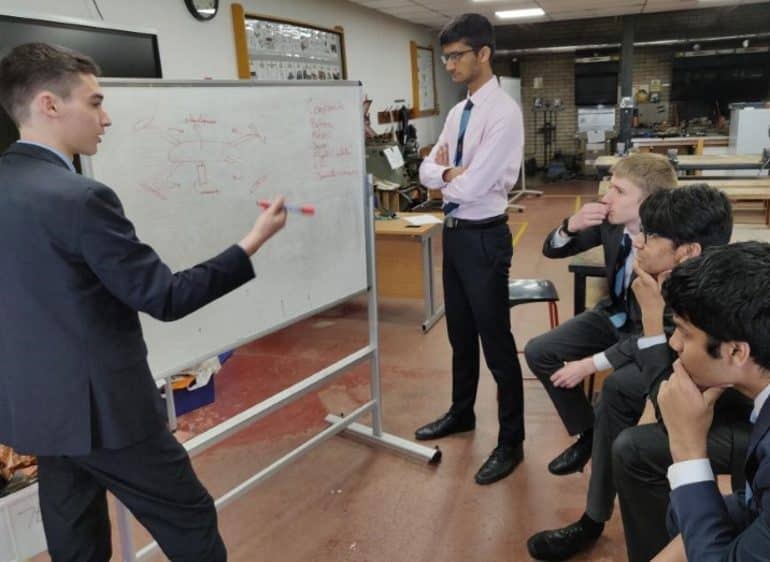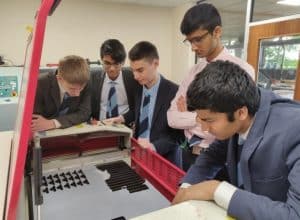High-flying drone team wins place in final of international competition

A QE Sixth Form team competes this week in the finals of a new international STEM education competition after impressing judges with their plans to use technology in the struggle to protect endangered animals.
 They will be up against teams from all over the world competing to show how drones could be deployed to conserve species threatened with extinction.
They will be up against teams from all over the world competing to show how drones could be deployed to conserve species threatened with extinction.
The boys brought in advanced Mathematics and used 3D printing and complex electronics in developing their entry proposal and making their own glider drone.
The finals of the International STEM (Science, Technology, Engineering, Mathematics) Youth Innovation Competition are being held at the Royal Air Force Museum, in London.
Head of Technology Michael Noonan said: “I am proud of the team and of the hard work they have put into this competition. From the initial selection of animal species to the creation of the report and to the development of the UAV [unmanned aerial vehicle] according to their designs, it was all the result of the team’s own little-by-little exploration and progression.”
The competition is organised by the British International Education Association (BIEA). Run for the first time last year, it was open only to British pupils, attracting entries from more than 2,000 schools. This year, it has been opened up to schools from around the world.
The 2019 theme is Fighting extinction using drone technology. There is a first prize of £5,000 for the team with the highest overall score.
 QE’s team, who are all from Year 12, are in the 15-17 year-old age category. The team comprises: Tarun Bhaskaran, Ben Domb, Deeps Gandhi, Aryan Jain and Simon Sherriff.
QE’s team, who are all from Year 12, are in the 15-17 year-old age category. The team comprises: Tarun Bhaskaran, Ben Domb, Deeps Gandhi, Aryan Jain and Simon Sherriff.
The team initially drew up a long list of endangered animals and explored the role drones could play in protecting them. As a result of these discussions, they decided to develop glider drones.
For their choice of subject, they wanted an animal with a large distribution area, so picked the black rhinoceros. Further research followed, as a result of which the team embraced military surveillance techniques to monitor black rhino populations effectively, while also using a complex equation to calculate the appropriate pixel resolution for the final design.
They decided to build the required drone themselves. This meant they could show off their ideas to best effect, but naturally made the process more challenging.
To meet this challenge, the team divided themselves into three sections and worked separately before coming together to provide the finished entry. One group was responsible for electronics, another for the video and a third for the fuselage. The electronics group focused on providing the control system and system compatibility; the video group made the video submission, wrote scripts, arranged 3D printing and coordinated the budget, and the fuselage group designed the chassis and structure of the drone.
The competition’s final deadline coincided with School examinations. This left the boys with some tricky time-management issues, which they resolved by drawing up a detailed division of work, all carefully scheduled outside of examination study time. The 14-hour days paid off when they duly submitted the report on time and then heard that they were among the finalists.
